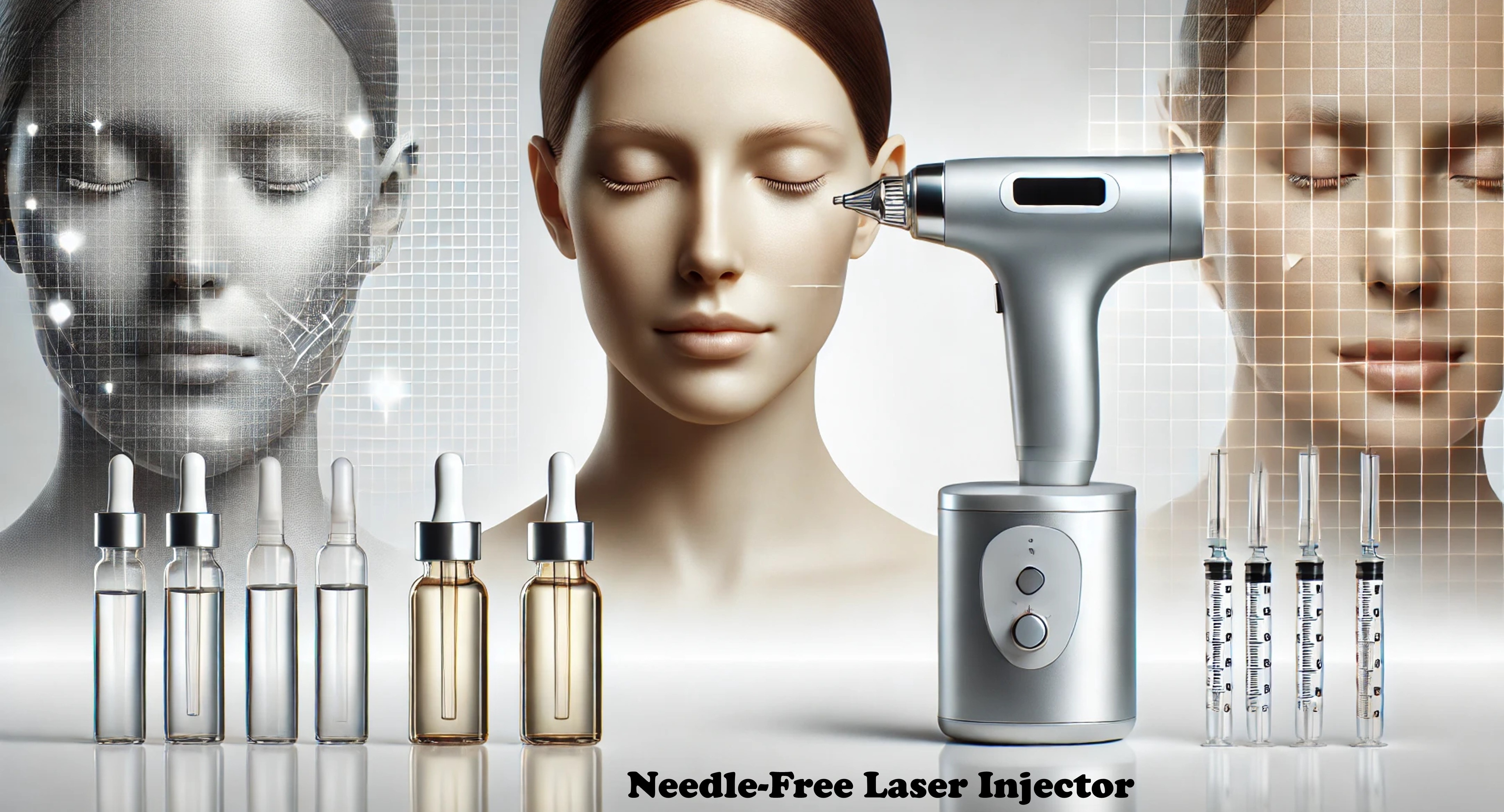Needle-Free Laser Injector as a Direct Drug Delivery System
KEY INFORMATION
Personal Care - Wellness & Spa
TECHNOLOGY OVERVIEW
The field of medical aesthetics has witnessed remarkable growth, driven by the increasing demand for non-surgical cosmetic treatments. Patients are increasingly seeking minimally invasive procedures that provide effective results with minimal discomfort, reduced downtime, and fewer side effects. This has spurred the development of advanced technologies such as dermal fillers, injections, and various energy-based devices to address common concerns like wrinkles, skin laxity, and volume loss. Despite these advancements, traditional needle-based injection methods still present challenges. They can cause discomfort, bruising, and anxiety, which often deter patients from seeking treatment or lead to suboptimal results due to patient hesitation. Additionally, needle-based procedures carry inherent risks, such as infection, uneven distribution of the injected substance, and potential damage to surrounding tissues.
To overcome these issues, a laser-guided, needleless drug injection device has been developed. This technology utilizes a 2940nm Er:YAG laser that interacts with water to create internal explosions, generating strong pressure. This pressure converts the drug, sprayed from a nozzle, into a jet form, allowing it to be delivered precisely and evenly into the desired skin layer. The technology enables the rapid injection of large quantities of medication, offering a pain-free, controlled, and efficient alternative to traditional needle-based injections.
The technology owner is seeking collaboration with partners in the aesthetics, pharmaceutical, medical laser device manufacturers, and professional medical institutions. The goal is to expand the application of this technology beyond aesthetics, into areas such as drug delivery for vaccines and other therapeutic uses.
TECHNOLOGY FEATURES & SPECIFICATIONS
The technology consists of a 2940nm Er:Yag laser body, a dedicated handpiece, and a nozzle. It is an innovative technology that allows safe and uniform delivery of drugs in microliter units.
- It is approved by CE to be used in the EU as a laser-based needle-free injector for drug delivery
- The drug can be injected at a rate of 0.3 microliters per injection
- Fast speed of up to 40 times per second
- Inject repeatedly and uniformly in the very shallow upper dermal layer (1-2mm)
- Minimal pain and minimal downtime to patient
- Dual effect of solution and micro-jet
- Micro-Jet nozzle is a disposable consumable
POTENTIAL APPLICATIONS
The technology, currently utilized in the medical aesthetics industry, holds significant potential for broader applications. By diversifying energy sources and adjusting energy intensity based on the core intellectual property, this technology could be adapted and customized for various applications such as
- cosmetic
- general medical care
- vaccine delivery
with a potential for targeting different depths of the skin (subcutaneous or intramuscular) in a compact version.
Unique Value Proposition
- Precise Micro-Injection: Delivers drugs at a controlled rate of 0.3 microliters per injection into the shallow upper dermal layer, ensuring accurate placement.
- High-Speed Delivery: Capable of up to 40 injections per second, allowing for a full facial treatment in approximately 5 minutes.
- Versatile Application: Suitable for a wide range of aesthetic solutions, including PRP, vitamins, glucose, hyaluronic acid, and PDLLA.
- Enhanced Control: Offers superior precision in targeting specific skin layers and controlling the exact amount of drug delivered compared to traditional methods.
- Minimized Discomfort: Needle-free technology ensures minimal pain, with fast recovery times and reduced downtime.

